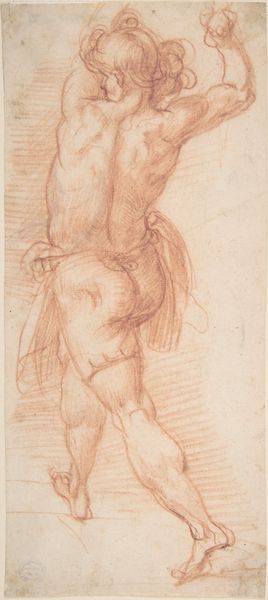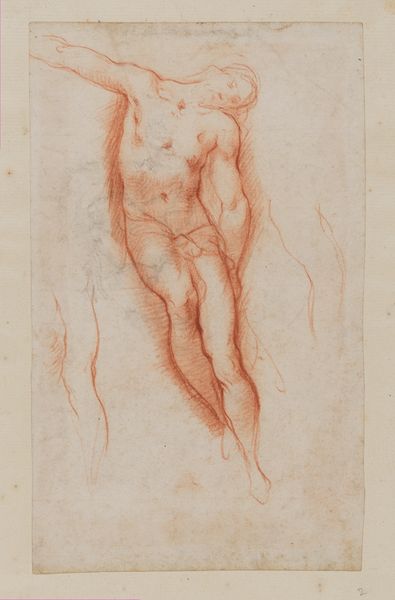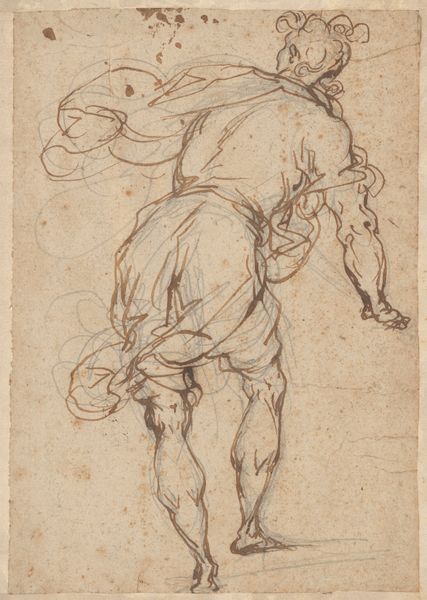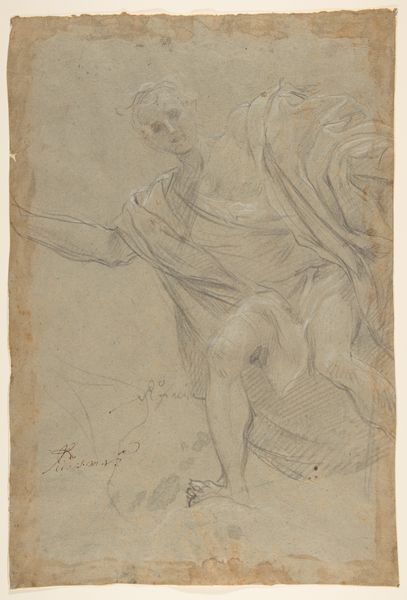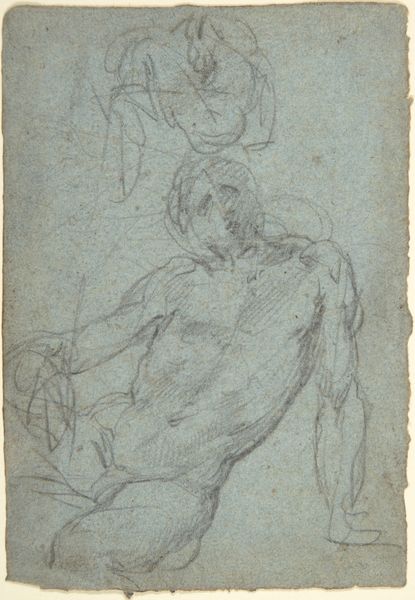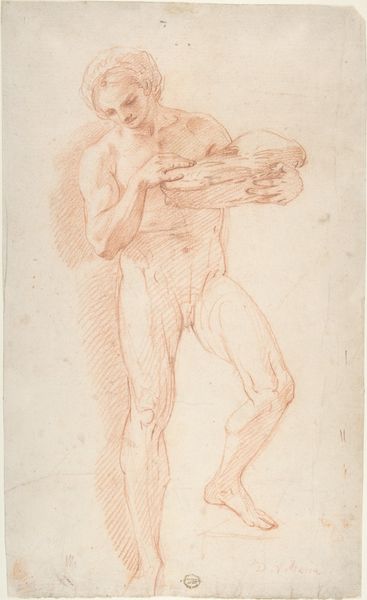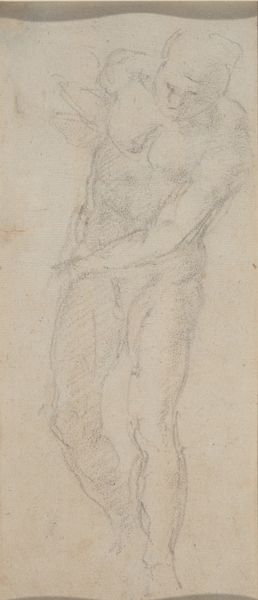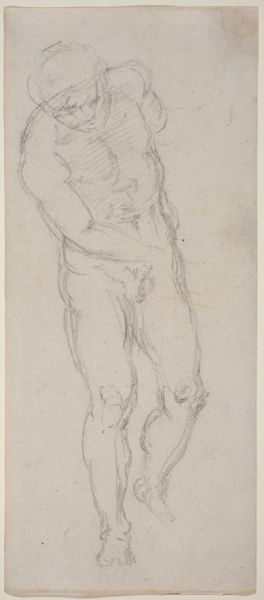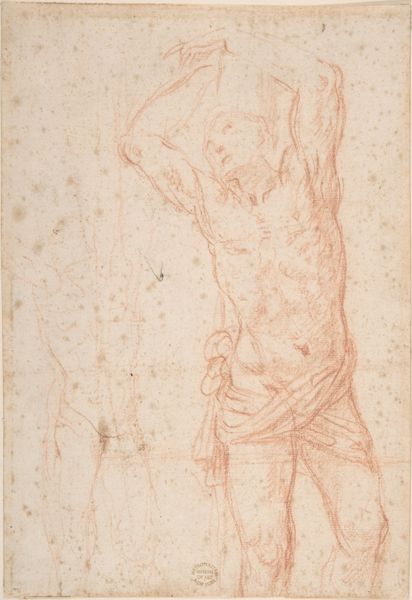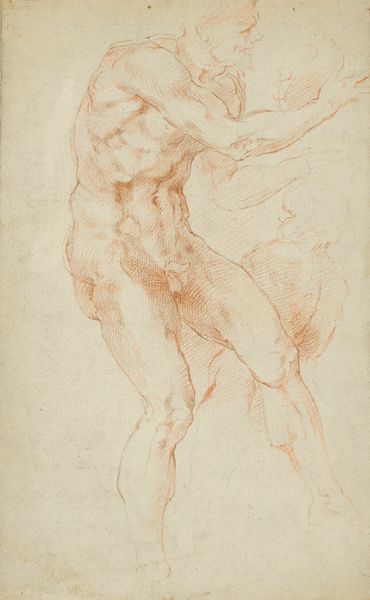![A Man Seen from Behind [verso] by Taddeo Zuccaro](/_next/image?url=https%3A%2F%2Fd2w8kbdekdi1gv.cloudfront.net%2FeyJidWNrZXQiOiAiYXJ0ZXJhLWltYWdlcy1idWNrZXQiLCAia2V5IjogImFydHdvcmtzL2IwYmIwZDU5LWVjMzEtNDRmOS1iMDhiLTRmZDk5NDdmN2E1ZS9iMGJiMGQ1OS1lYzMxLTQ0ZjktYjA4Yi00ZmQ5OTQ3ZjdhNWVfZnVsbC5qcGciLCAiZWRpdHMiOiB7InJlc2l6ZSI6IHsid2lkdGgiOiAxOTIwLCAiaGVpZ2h0IjogMTkyMCwgImZpdCI6ICJpbnNpZGUifX19&w=3840&q=75)
drawing
#
portrait
#
drawing
#
figuration
#
11_renaissance
#
italian-renaissance
Dimensions: overall (approximate): 34.4 x 18.3 cm (13 9/16 x 7 3/16 in.)
Copyright: National Gallery of Art: CC0 1.0
Curator: Taddeo Zuccaro’s “A Man Seen from Behind” greets us. Dating back to about 1555, this drawing, with its red chalk medium, offers an intimate glimpse into Renaissance figure study. Editor: The use of sanguine gives it a fleshy warmth. It's striking how vulnerable this pose is – the averted gaze, the crossed arms... There's a definite tension in the line work that speaks to a very specific moment. Curator: It’s compelling to remember how the Accademia del Disegno, established a decade or so later, formalized artistic training, placing anatomical study like this drawing at its core. The male nude served as both an aesthetic ideal and an intellectual puzzle. Editor: Yes, but also, let's think about whose bodies were deemed worthy of representation, worthy of immortalization in art. This idealized, muscular form wasn't accessible to everyone, nor were its representations open to all. The inherent power dynamics need interrogation. Who is able to create and consume this kind of art and what discourses about beauty and power does it sustain? Curator: Absolutely. Consider the patron too, the societal demand for classical-inspired art and the currency that came with it, perpetuating norms but, I’d argue, concurrently enabling explorations of form by those employed to execute the work. Editor: Even within constraints, subversive readings become available with hindsight, though often at the peril of those depicted. This rendering presents him removed from other action. A drawing on the verso? How can we read against the grain, locating agency where convention dictates passivity, and consider whether the choice of subject itself suggests coded messages about status, power, or identity, in both period and current times. Curator: It makes you wonder about its life outside a studio—was it preparatory, or something cherished for private contemplation? Editor: Well, it invites considerations far beyond anatomical precision; art historical and socio-political dialogues with the piece may enrich it still further, despite its formal beauty. Curator: An artist’s role in cultural conversation never loses potency through history.
Comments
No comments
Be the first to comment and join the conversation on the ultimate creative platform.

